We repeat ourselves, and so do our products: endless iterations of us
and our desires, a baggy monster of consumables. Without crapping the
dice (prearranging the outcome, known in the sport as cheating), Sol
Hashemi approaches his wide-world of materials as if they were the elements of his own
crap game. Objects are in play by rules he invents on the spot, yet the
outcomes of his inquires, mounted in a gallery, reverberate beyond his
intentions.
They have juice. They are not, in the end, casual, no
matter how casually conceived. Currently at 4Culture Gallery is
Hashemi’s Object History Awareness, an assemblage of photos and
installations. Hashemi believes in the alchemical attraction between people, places and things. If he were answering a personals ad, he’d say yes to everybody. Any x standing next to any other y is instantly in a serious relationship.
Within his vast sea of connections, he allows for individual goals. Everyone wants to light fires in the studio, for instance, and almost everyone fails.
Hashemi feels for those failures. His grid of comic efforts at ignition
buries metaphor under the weight of the literal.
Studio fires
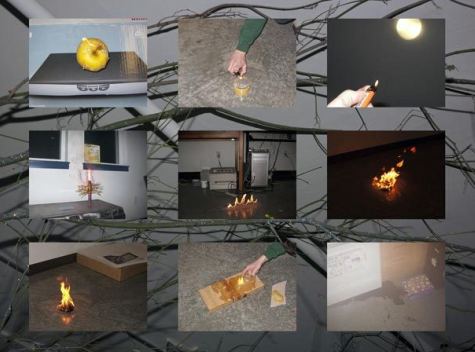 How about a birthday
How about a birthday
party? Each one marks progress towards the grave. Why not, since we’re
going there anyway, die faster? (Hope I die before I get old.)
Cake with Fast Lit Candles
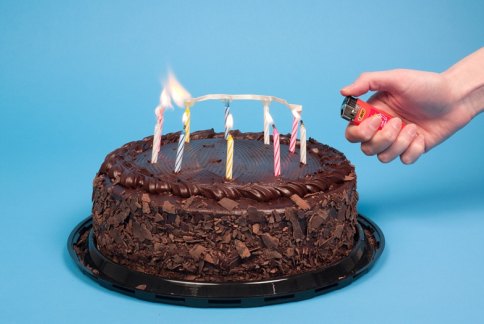 Page through any book
Page through any book
on the history of art, and you’ll find flowers. Below, in an interaction with a note pad, are both the flowers
and the flipping through a text to find them.
Bouquet of Flowers (After Pissaro)
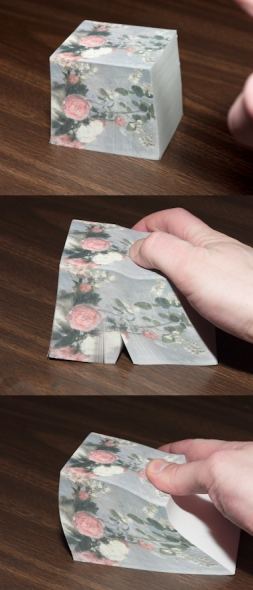 “Let a hundred flowers
“Let a hundred flowers
bloom,” said Chairman Mao. What followed was the flower-filled paradise of the Cultural Revolution. Even
though Hashemi is an artist instead of murderous thug and Communist Party Sun
God, his goals have a similarly lofty ring: Let a hundred forests
bloom. He’s starting with nine. Everyone has to start somewhere.
Potted Plants
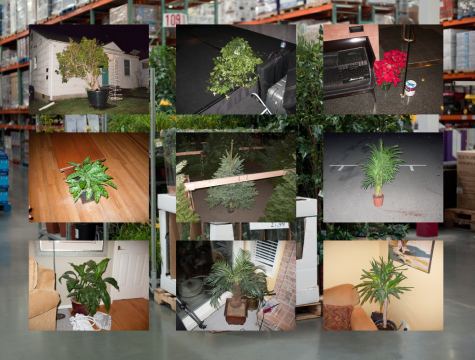 Last year, at an exhibit honoring graduating B.F.A. students at the University of Washington, one of Hashemi’s sculptures disappeared during the opening party. Hashemi later found it beside a trash can, waiting for removal. Apparently, a volunteer doing a last bit of tidying up had mistaken it for rubble. How could that have happened? Below, a representative of Hashemi’s sculptural prowess:
Last year, at an exhibit honoring graduating B.F.A. students at the University of Washington, one of Hashemi’s sculptures disappeared during the opening party. Hashemi later found it beside a trash can, waiting for removal. Apparently, a volunteer doing a last bit of tidying up had mistaken it for rubble. How could that have happened? Below, a representative of Hashemi’s sculptural prowess:
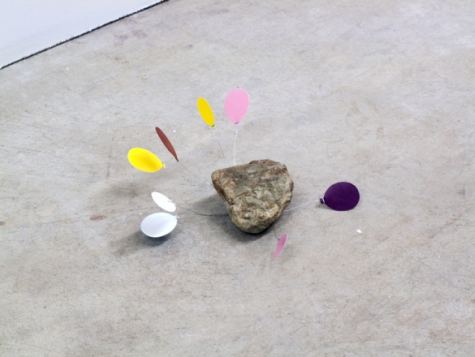 I think it’s terrific. Through Feb. 26. (Previous on Hashemi and his frequent art partner, Jason Hirata, here. Michael Upchurch in the Seattle Times on the current exhibit here.)
I think it’s terrific. Through Feb. 26. (Previous on Hashemi and his frequent art partner, Jason Hirata, here. Michael Upchurch in the Seattle Times on the current exhibit here.)



Leave a Reply